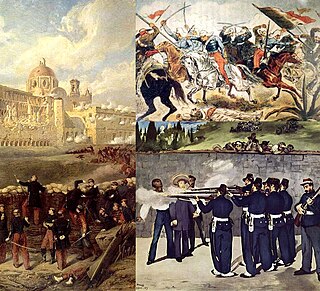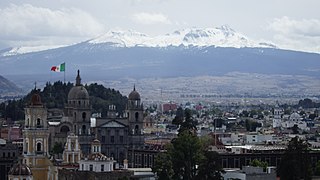
Sebastián Lerdo de Tejada Corral was a jurist and Liberal president of Mexico, succeeding Benito Juárez who died of a heart attack in July 1872. Lerdo was elected to his own presidential term later in 1872 rather than remaining successor due to his previous office of Chief Justice of the Supreme Court. Juárez's political rival liberal General Porfirio Díaz had attempted a coup against Juárez, but his Plan de la Noria failed and Díaz was eliminated as a political foe during Lerdo's 1872-76 term, giving Lerdo considerable leeway to pursue his program without political interference. Lerdo was more successful than Juárez in his final years as president in pacifying the country and strengthening the Mexican state. He ran for another term in 1876 and was elected, but was overthrown by Porfirio Díaz and his supporters under the Plan of Tuxtepec, which asserted the principle of no-reelection to the presidency. Lerdo died in exile in New York in 1889, but Díaz invited the return of his body to Mexico for burial with full honors. Not counting Miguel Miramón, an unrecognized president during the Reform War, he is the first president of the recognized presidents that was not born during Spanish colonial rule.

Miguel Gregorio de la Luz Atenógenes Miramón y Tarelo, known as Miguel Miramón, was a Mexican conservative general and politician. He served as anti-constitutional interim conservative President of Mexico in opposition to the constitutional president, Benito Juárez of the Liberal Party. He was one the youngest rulers and the first not born during Spanish colonial rule.

The Mexican Empire or Second Mexican Empire was the name of Mexico under a limited hereditary monarchy declared by the Assembly of Notables on July 10, 1863, during the Second French intervention in Mexico. It was created with the support of Napoleon III of France, who attempted to establish a monarchist ally in the Americas. A referendum confirmed Austrian Archduke Ferdinand Maximilian, of the House of Habsburg-Lorraine, as Emperor Maximilian I of Mexico.

Juarez is a 1939 American historical drama film directed by William Dieterle. The screenplay by Aeneas MacKenzie, John Huston, and Wolfgang Reinhardt is based on the biography The Phantom Crown by Bertita Harding and the play Juarez and Maximilian by Franz Werfel.
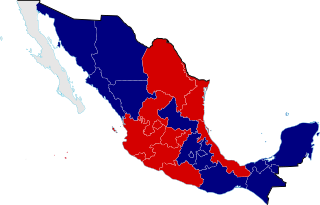
The War of Reform in Mexico, during the Second Federal Republic of Mexico, was the three-year civil war between members of the Liberal Party who had taken power in 1855 under the Plan of Ayutla, and members of the Conservative Party resisting the legitimacy of the government and its radical restructuring of Mexican laws, known as La Reforma. The War of the Reform is one of many episodes of the long struggle between Liberal and Conservative forces that dominated the country’s history in the 19th century. The Liberals wanted to eliminate the political, economic, and cultural power of the Catholic church as well as undermine the role of the Mexican Army. Both the Catholic Church and the Army were protected by corporate or institutional privileges (fueros) established in the colonial era. Liberals sought to create a modern nation-state founded on liberal principles. The Conservatives wanted a centralist government, some even a monarchy, with the Church and military keeping their traditional roles and powers, and with landed and merchant elites maintaining their dominance over the majority mixed-race and indigenous populations of Mexico.

The Imperial Crown of Mexico was the crown created for the Emperor of Mexico on two separate occasions.

Juan Nepomuceno Méndez was a Mexican general, a Liberal politician and confidante of Porfirio Díaz, and interim president of the Republic for a few months during the Porfiriato. He served from 6 December 1876 until 17 February 1877.

Pelagio Antonio de Labastida y Dávalos was a Mexican Roman Catholic prelate, lawyer and doctor of canon law, and politician. He was a member of the imperial regency that invited Maximilian of Austria to accept the throne of Mexico.

The House of Iturbide is the former Imperial House of Mexico. It was founded by the Sovereign Mexican Constituent Congress on June 22 1822 when the newly-independent Mexican congress confirmed his title of Agustín I, Constitutional Emperor of Mexico. He was baptized with the names of Saints Cosmas and Damian at the cathedral there. The lastname Iturbide was originally from the Basque Country, Spain.

Austria–Mexico relations refers to the diplomatic relations between the Republic of Austria and the United Mexican States. Both nations are members of the OECD and the United Nations.

Agnes Salm-Salm was the American wife of Prince Felix zu Salm-Salm, a Prussian mercenary beside whom she played a role in the American Civil War, the Mexican Civil War between President Benito Juárez and the Austrian archduke Maximilian I of Mexico, and the Franco-Prussian War.

The Commemorative medal of the Mexico Expedition was a French commemorative campaign medal established by decree of French emperor Napoleon III on 29 August 1863 to recognize military service during the 1862-1863 French intervention in Mexico.
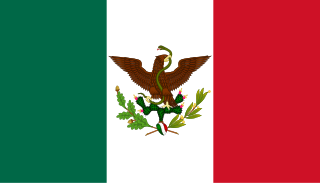
The Second Federal Republic of Mexico is the name given to the second attempt to achieve a federalist government in Mexico. Officially called the United Mexican States, a federal republic was implemented again on August 22, 1846 when interim president José Mariano Salas issued a decree restoring the 1824 constitution. Like the Mexican Empire, the First Federal Republic and the Centralist Republic it was a chaotic period, marked by political instability that resulted in several internal conflicts. Mexico's loss of the war with the United States saw half the territory Mexico claimed become part of the United States. Even though Antonio López de Santa Anna played a major role in much of this history, he returned to the presidency yet again, selling northern territory coveted by the United States contiguous to territory it just gained in the Treaty of Guadalupe Hidalgo. The sale of the Mesilla Valley was for many the final straw, and liberals promulgated of the Plan of Ayutla, calling for the overthrow of Santa Anna. Santa Anna went into exile and the liberals set about implementing their vision of Mexico.
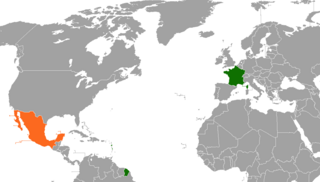
France–Mexico relations refers to the diplomatic relations between France and Mexico. Both nations are members of the G-20 major economies, Organisation for Economic Co-operation and Development and the United Nations.
The Conservative Party was a Mexican political party that sought to preserve the organization and colonial Spanish values, both in government and in society. Although as a party it was founded in 1849, after the defeat of Mexico in the war with the United States, most of the political ideology directly descended from the Jesuits expelled in the 18th century, and the establishment of a Criollism or Hispanism sentiment, which then emerged and were strongly influenced by conservative European thoughts. It also advocated the preservation and supremacy of the Criollos élite culture over those of mestizo or indigenous. It was a party of the élite, established by white landowners and aristocrats. The Conservative Party disappeared in 1867, after the fall of Maximilian I of Mexico.

The Regency of the Mexican Empire was a period of transition in the history of the Mexican monarchy in the absence of the Emperor of Mexico and presided by a president of the same during the First Mexican Empire (1821-1823) and the Second Mexican Empire (1863-1867). The regency is the government of a State during the minor age, absence or incapacity of its legitimate prince.






